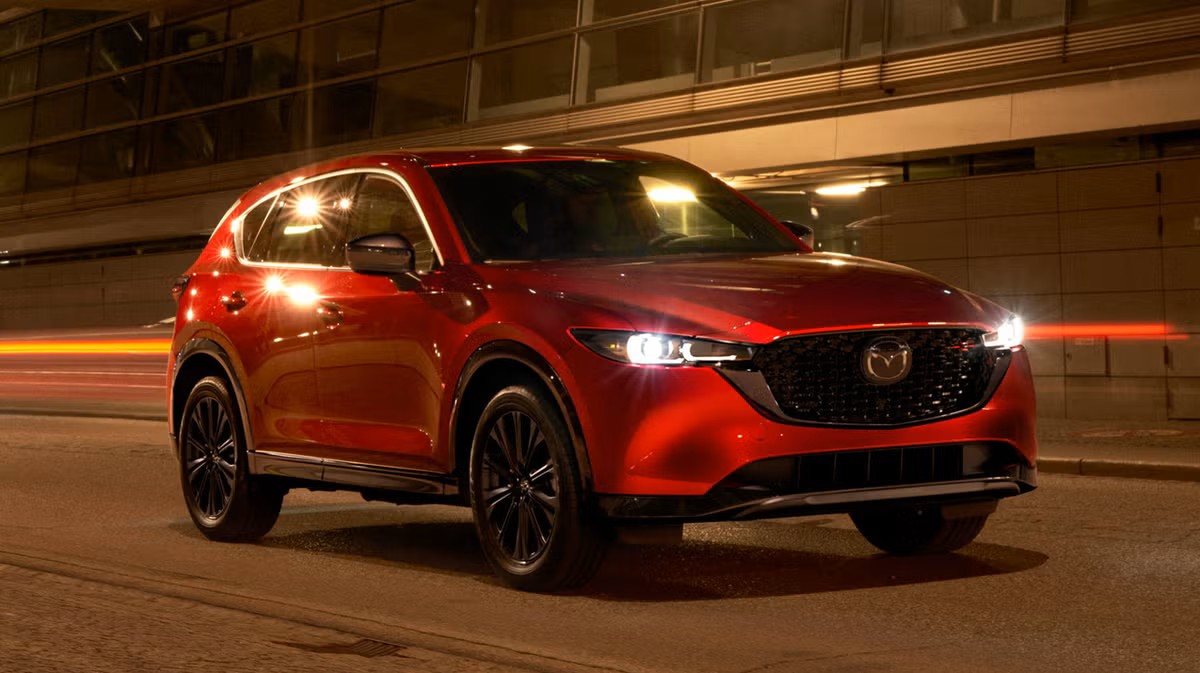When shopping for an SUV, the purchase price is just the beginning of your financial commitment. The true cost of ownership extends far beyond the dealership, with repair and maintenance expenses often becoming the hidden burden that many owners fail to anticipate.
As these vehicles age and warranties expire, some SUVs maintain their reliability and feature parts that won’t break the bank, while others transform into financial sinkholes that demand frequent, costly repairs.
In today’s automotive world, where technology grows increasingly complex and specialized, repair costs vary dramatically across manufacturers and models.
Some brands have prioritized serviceability and part standardization, resulting in SUVs that remain economical to maintain even after significant mileage.
Others implement proprietary systems and components that require specialized knowledge and tools, significantly increasing labor costs and part replacement expenses.
This comprehensive guide dives deep into the real-world repair economics of today’s popular SUVs. We’ve analyzed reliability data, parts pricing, labor requirements, and owner experiences to identify which models offer surprising value in the service bay and which ones might leave you with severe repair bill shock.
Whether you’re shopping for a new SUV or trying to determine if your current vehicle is worth keeping, this insider knowledge will help you make informed decisions about the true long-term costs of SUV ownership.
SUVs That Are Surprisingly Cheap to Repair
These practical family haulers feature logical component layouts, widely available parts, and straightforward repair procedures that keep maintenance costs remarkably low despite their feature-rich designs.
Their modular engineering approaches and consistent parts sharing across model years create economies of scale that translate to affordable replacement components when repairs become necessary.
Thoughtful design decisions like accessible spark plugs, simple oil filter locations, and logical component grouping reduce labor times significantly compared to competitors’ overcomplicated layouts.
Owners report consistently paying less for routine maintenance and unexpected repairs, with many DIY enthusiasts celebrating the refreshing accessibility that makes weekend garage projects genuinely feasible.
1. Honda CR-V
The Honda CR-V stands as a testament to Honda’s commitment to engineering reliability and repair-friendly design that doesn’t sacrifice quality or performance.
This compact SUV has earned its reputation through thoughtful engineering decisions that make maintenance both straightforward and affordable, helping it become one of America’s best-selling vehicles year after year.
Honda’s philosophy of standardization plays a significant role in the CR-V’s low repair costs. Many components are shared across Honda’s vehicle lineup, creating economies of scale that drive down parts prices.
This interchangeability means that when replacements are needed, owners benefit from competitive pricing and wide availability of components.
Furthermore, the CR-V’s engine bay layout reflects Honda’s emphasis on serviceability, with common maintenance items like the oil filter, air filter, and spark plugs being easily accessible without specialized tools.
The CR-V’s 1.5-liter turbocharged and 2.0-liter hybrid powertrains, while technically advanced, adhere to proven engineering principles that minimize failure points.
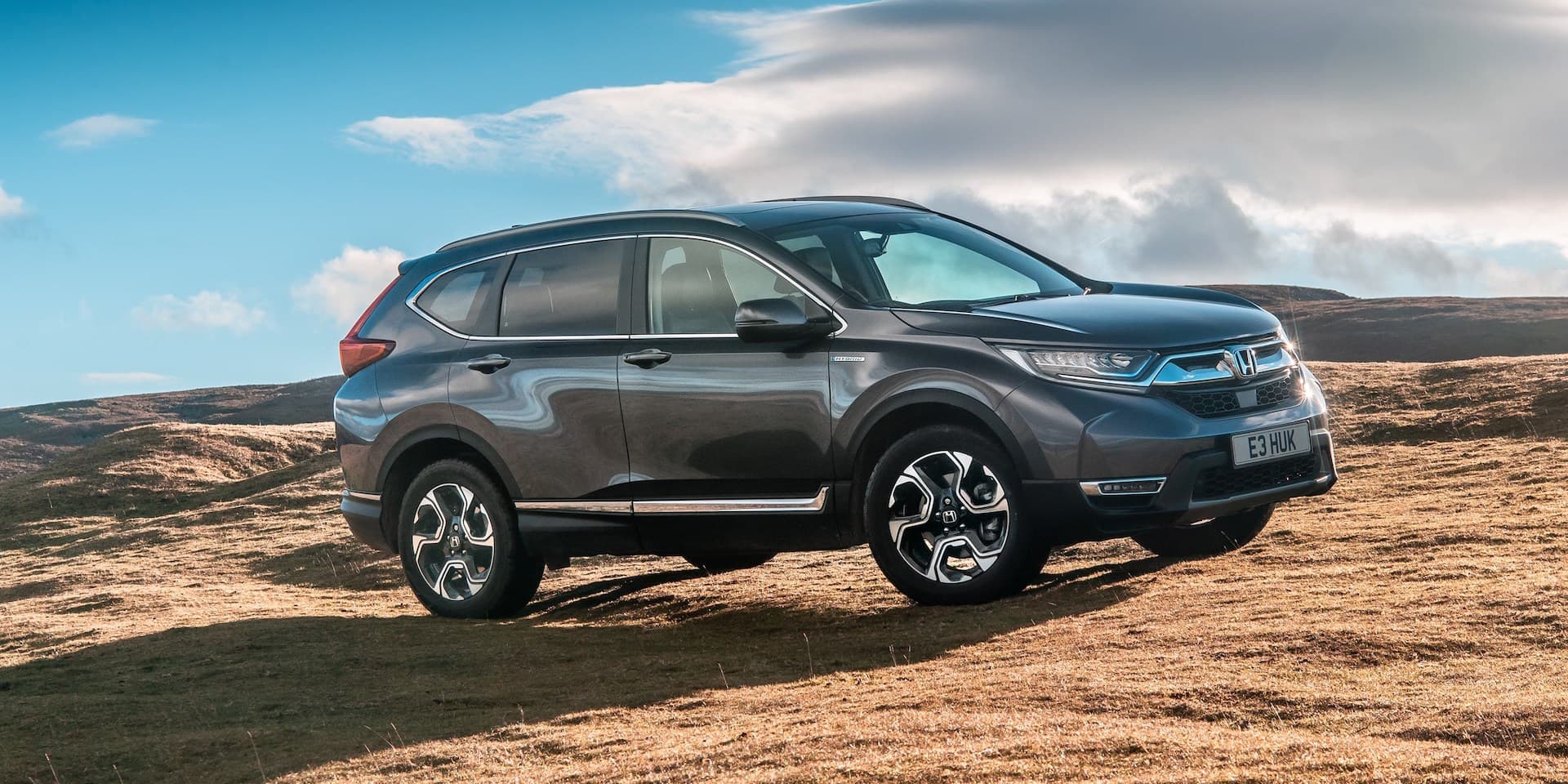
Honda’s legendary reliability extends to these systems, with timing chains that rarely need replacement (unlike timing belts in some competitors that require regular service intervals) and transmission designs that have been refined over generations to eliminate historical weak points.
Repair facilities consistently report that the CR-V requires less labor time for common procedures compared to many competitors.
For example, brake pad replacements are straightforward operations that can be completed in minimal time, and the vehicle’s suspension components typically exhibit impressive longevity, often lasting beyond 100,000 miles before requiring attention.
The electrical system demonstrates similar durability, with few owners reporting significant issues with sensors or control modules that can be expensive to diagnose and replace.
Another often-overlooked factor in the CR-V’s economical repair profile is the aftermarket support network. The vehicle’s popularity has created a robust ecosystem of quality aftermarket parts that provide cost-effective alternatives to dealership components without compromising quality.
Additionally, the vast community of CR-V owners has generated extensive DIY repair resources online, empowering mechanically inclined owners to handle many maintenance tasks themselves, further reducing lifetime service costs.
While no vehicle is immune to occasional issues, the CR-V’s problem areas are well-documented and typically inexpensive to address.
Earlier models experienced air conditioning compressor failures that have been largely resolved in current generations, and the occasional oil dilution issues in the turbocharged engine have been addressed through software updates and revised maintenance schedules.
This transparency and Honda’s proactive approach to addressing concerns further contribute to the CR-V’s status as a repair-friendly choice in the SUV market.
2. Toyota RAV4
The Toyota RAV4 has established itself as the gold standard for maintenance affordability in the compact SUV segment, earning its reputation through decades of evolutionary rather than revolutionary design changes.
This measured approach to vehicle development has allowed Toyota to perfect its systems over time, eliminating weak points and optimizing durability in ways that directly translate to lower repair costs throughout the vehicle’s lifespan.
Toyota’s commitment to mechanical simplicity stands at the core of the RAV4’s repair economy. While competitors have rushed to implement complex electronics and cutting-edge but unproven technologies, Toyota has traditionally taken a more conservative approach.
The RAV4’s 2.5-liter engine employs a time-tested, naturally aspirated design with relatively low internal stresses, contributing to exceptional longevity with minimal intervention.
The standard eight-speed automatic transmission similarly benefits from incremental improvements rather than complete reinventions, resulting in fewer failure points and more affordable repairs when service is eventually needed.
Parts availability represents another significant advantage in the RAV4’s affordability equation. As one of the world’s best-selling vehicles, the economy of scale drives down component costs, while the global distribution network ensures that replacement parts are readily available virtually anywhere.
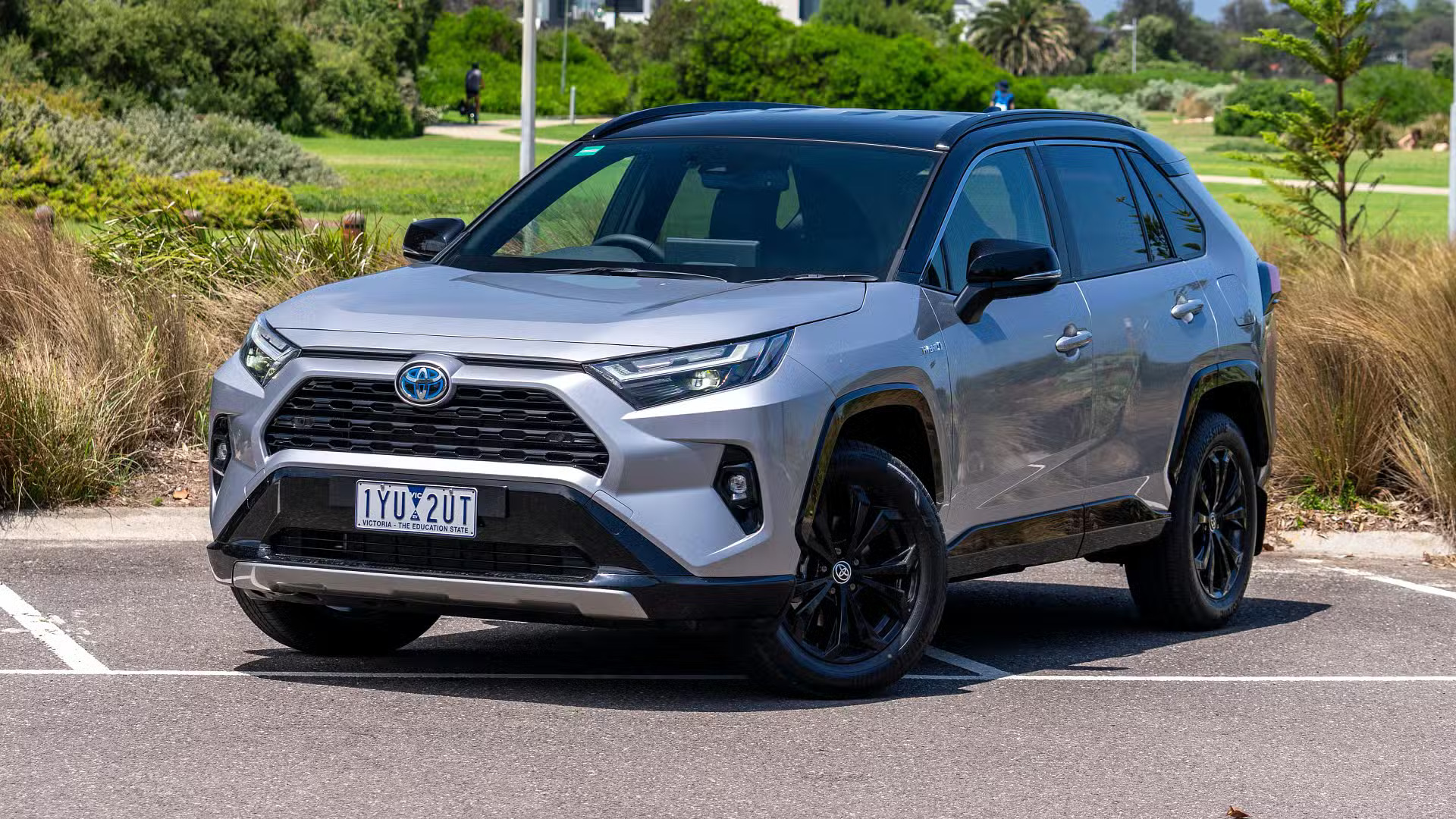
This accessibility extends to both OEM and aftermarket options, giving owners flexibility in their repair approach based on budget and preferences.
Toyota’s parts pricing strategy also tends to be more reasonable than many competitors, particularly European luxury brands that can charge premium prices for essentially identical components.
The RAV4’s serviceability further contributes to its economical repair profile. Routine maintenance points are designed with accessibility in mind, allowing technicians to complete work efficiently and reducing labor costs accordingly.
The vehicle’s electrical architecture, while comprehensive, follows logical organization principles that simplify diagnostics. The standardized diagnostic system used across Toyota’s lineup means that most independent repair shops already possess the necessary tools and knowledge to efficiently troubleshoot issues without expensive dealer-specific equipment.
Perhaps most impressively, the RAV4 Hybrid variant maintains this repair-friendly reputation despite its additional complexity.
Toyota’s hybrid system has been refined over multiple decades since the original Prius, resulting in exceptional reliability and surprisingly affordable repair costs when service is needed.
The hybrid battery, often cited as a concern in electrified vehicles, has demonstrated remarkable longevity, with many units exceeding 150,000 miles before requiring attention.
When replacement is eventually necessary, Toyota’s scale has driven down costs substantially compared to other hybrid manufacturers, and a robust remanufactured battery market provides additional economical options. Toyota’s support for the RAV4 extends well beyond the typical vehicle lifecycle, with parts availability maintained for decades.
This long-term commitment means that even high-mileage examples can be economically maintained rather than discarded, contributing to the model’s exceptional resale value and reinforcing its position as one of the most financially sensible SUV options from purchase through ownership and eventual resale.
3. Subaru Forester
The Subaru Forester represents a fascinating case study in repair economics, delivering surprising affordability despite its somewhat unconventional engineering.
The vehicle’s signature boxer engine and standard all-wheel-drive system might suggest complexity, but Subaru’s thoughtful approach to these distinctive features has created an SUV that defies expectations when it comes to maintenance costs.
Subaru’s commitment to evolutionary design bears significant responsibility for the Forester’s repair-friendly nature. Rather than radically reinventing their signature boxer engine with each generation, Subaru has methodically refined this horizontal powerplant over decades, gradually eliminating weak points while retaining the fundamental architecture.
This approach has created a mature, well-understood engine design where common issues are well-documented and repair procedures are standardized.
While the boxer configuration does present some accessibility challenges compared to conventional inline engines, the predictability of service needs and established repair protocols offset these concerns.
The Forester’s all-wheel-drive system similarly benefits from Subaru’s extensive experience. Unlike some competitors who adapted AWD to platforms originally designed for front-wheel drive, Subaru built the Forester around AWD from inception.
This purpose-built approach eliminates many of the compromises and potential failure points found in adapted systems.
The symmetrical layout distributes stresses more evenly across drivetrain components, reducing premature wear and extending service intervals for expensive items like differentials and CV joints.
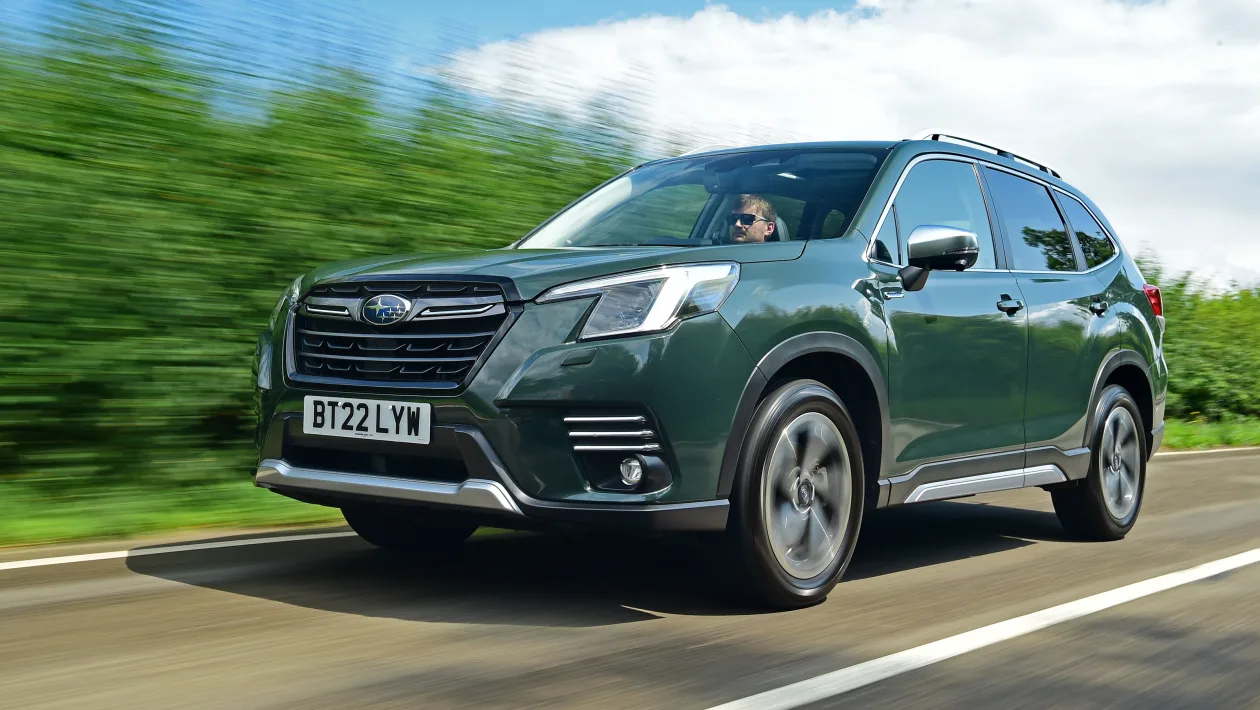
Parts pricing represents another surprising strength for the Forester. Despite its Japanese origin and somewhat specialized engineering, Subaru has maintained reasonable parts costs through efficient supply chain management and the economies of scale that come from using similar components across multiple models.
The massive popularity of Subaru vehicles in regions with challenging weather has also spawned a robust aftermarket, providing cost-effective alternative parts that maintain quality while reducing expenses.
This competitive parts world is particularly beneficial for owners of older Foresters, who can often find economical solutions for virtually any repair need. Labor costs for Forester repairs benefit from Subaru’s consistent approach to vehicle architecture.
Technicians familiar with one generation of Forester can efficiently work on others, as the fundamental systems and access methods remain largely unchanged.
This continuity reduces diagnostic time and eliminates the learning curve that can add significant labor charges when working on more frequently redesigned vehicles.
Additionally, Subaru’s technical documentation is known for its clarity and completeness, further streamlining repair processes and helping technicians correctly identify and resolve issues on the first attempt.
The Forester’s reliability profile contributes to its low lifetime repair costs in a somewhat counterintuitive way.
While historically having a few well-known issues particularly head gasket concerns in older models and some oil consumption in the 2011-2014 era these problems are so thoroughly documented that technicians can often preemptively address them during routine service before catastrophic failure occurs.
This predictability transforms what could be expensive emergency repairs into planned maintenance events, spreading costs over time and preventing the cascading damage that often makes repairs prohibitively expensive.
The current generation Forester has addressed many of these historical concerns, further improving the model’s economic proposition.
4. Kia Sportage
The Kia Sportage defies conventional wisdom about affordable repairs, delivering exceptional value that belies its competitive purchase price.
Once dismissed as a budget option with corresponding quality concerns, the modern Sportage has undergone a remarkable transformation that has raised its reliability while maintaining repair costs that rival or even undercut more established Japanese competitors.
Kia’s strategic approach to component sharing forms the foundation of the Sportage’s repair economy. The vehicle shares its platform and many mechanical components with the Hyundai Tucson, creating economies of scale that drive down parts costs.
Moreover, many subsystems are standardized across Kia’s broader lineup, further increasing production volumes and reducing replacement part expenses.
This commonality extends to engines, transmissions, and electronic modules, ensuring that when repairs are needed, the components are neither rare nor specialized, avoiding the premium pricing that often accompanies proprietary parts.
The Sportage’s warranty coverage plays an indirect but significant role in its repair affordability. Kia’s famous 10-year/100,000-mile powertrain warranty has forced the manufacturer to focus intensely on building durable components that won’t generate warranty claims, creating a vehicle that’s inherently more reliable.
This improved quality directly translates to fewer repair instances throughout ownership. Additionally, the comprehensive warranty coverage means that early issues are typically addressed at no cost to the owner, effectively resetting the reliability clock and preventing cascading problems that often make older vehicles expensive to maintain.
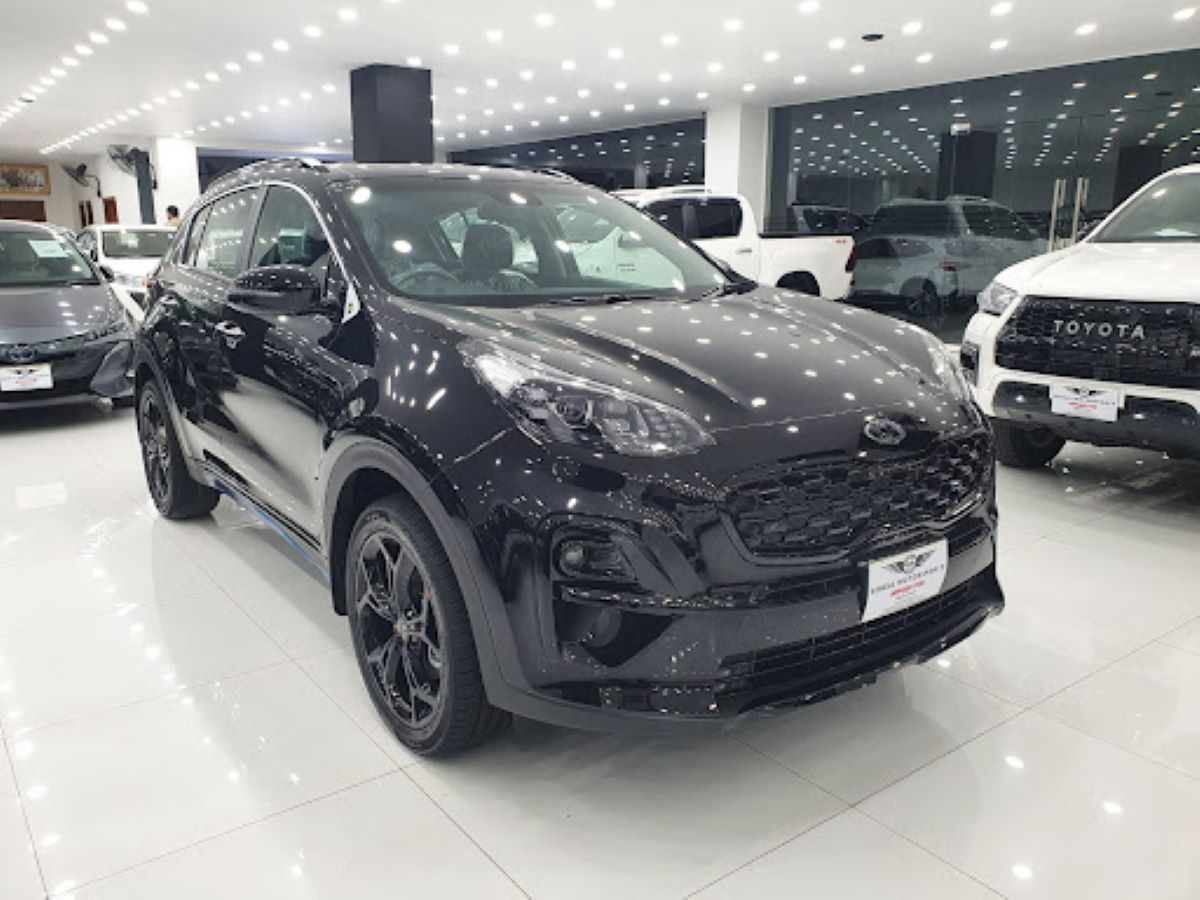
Technician accessibility represents another surprising strength of the Sportage. Kia’s engineering team has prioritized service-friendly design elements that reduce labor time for common repairs.
The engine bay layout provides good access to frequently serviced components like belts, filters, and spark plugs. Critical systems like the starter and alternator don’t require extensive disassembly for replacement, unlike some competitors where these same repairs might require removing multiple components or even engine subframes.
This thoughtful design directly reduces labor costs, which often represent the majority of repair expenses. The Sportage’s electrical architecture similarly contributes to its repair economy.
Kia has implemented advanced diagnostics while maintaining a relatively straightforward electrical system that avoids unnecessary complexity. The vehicle’s control modules are designed with serviceability in mind, with clear communication protocols that enable accurate troubleshooting without dealer-specific tools.
This approach allows independent shops to efficiently diagnose and repair electronic issues without the higher labor rates typically associated with dealership service departments.
Perhaps most impressive is how Kia has achieved this repair affordability without sacrificing the technology and features buyers expect in a modern SUV.
The current Sportage offers advanced driver assistance systems, sophisticated infotainment options, and available hybrid powertrains all while maintaining a repair-friendly design philosophy.
When components of these systems do require attention, they’re typically modular units that can be replaced individually rather than as complete assemblies, keeping repair costs proportionate to the actual failure rather than requiring wholesale replacement of entire systems.
Also Read: 5 Cars That Nail Voice Commands and 5 That Mishear Constantly
5. Mazda CX-5
The Mazda CX-5 represents perhaps the most elegant balance of upscale design and repair affordability in the compact SUV segment.
While offering a near-luxury experience that rivals European competitors, the CX-5 maintains a refreshingly straightforward approach to engineering that translates directly to lower maintenance costs throughout ownership making it the thinking person’s alternative to premium-branded SUVs.
Mazda’s philosophy of mechanical simplicity serves as the cornerstone of the CX-5’s repair economy. The company has deliberately avoided the trend toward overly complex solutions, instead focusing on refining conventional technologies to perform exceptionally well.
The standard SkyActiv-G engines employ a naturally aspirated design with an unusually high compression ratio rather than resorting to turbocharging for their efficiency gains.
This approach eliminates the additional components and potential failure points associated with forced induction systems while delivering comparable performance and economy.
Similarly, the transmission options whether the six-speed automatic or six-speed manual utilize proven designs that prioritize reliability over having the highest number of gear ratios in the segment.
Parts interchangeability across Mazda’s lineup significantly contributes to the CX-5’s affordable repair profile. Many components are shared with other Mazda vehicles, creating manufacturing economies of scale that reduce production costs and ultimately parts prices.
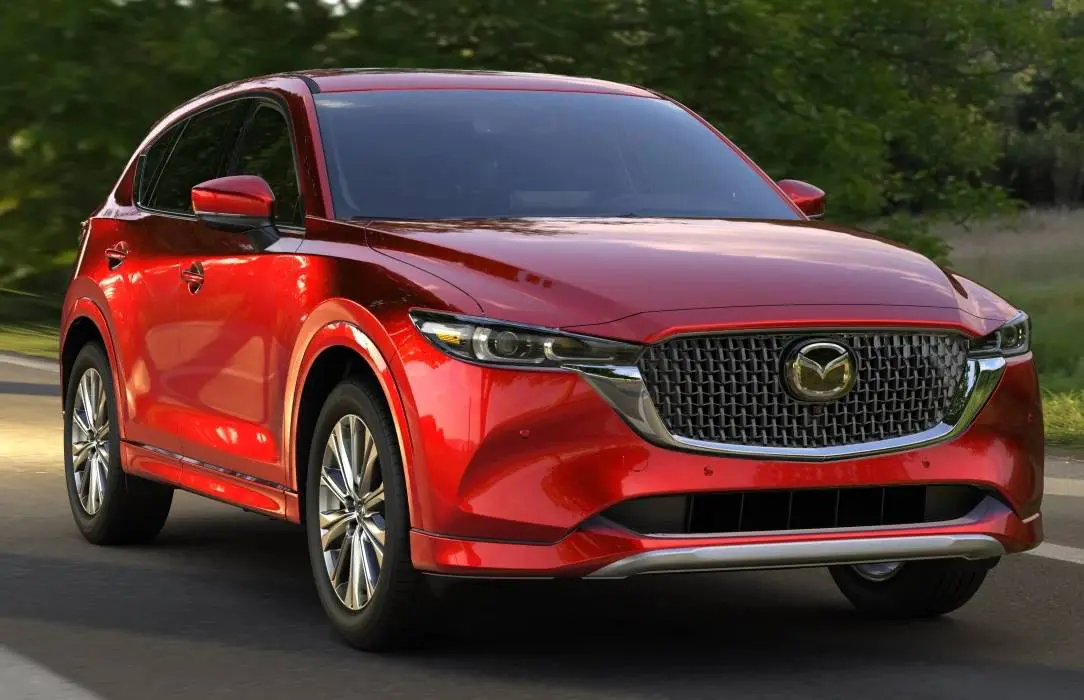
This standardization extends to wear items like brake components, filters, and suspension parts, ensuring that replacement parts remain readily available and reasonably priced throughout the vehicle’s lifecycle.
Mazda’s global production strategy has also helped stabilize parts supply chains, preventing the availability issues and price volatility that sometimes affect more specialized vehicles.
The CX-5’s thoughtful design extends to serviceability aspects that directly impact labor costs. Access to common maintenance points is generally good, with logical component placement that reduces the time required for routine service.
More substantial repairs benefit from Mazda’s relatively clean engineering approach, with systems that can typically be accessed without removing multiple unrelated components.
This contrasts sharply with some European competitors that often require cascading disassembly procedures for even moderate repairs, significantly increasing labor charges.
Electrical system reliability represents another area where the CX-5 shines from a repair perspective. Mazda has implemented modern technology while maintaining a reputation for electrical system durability that exceeds many competitors.
The vehicle’s electronic architecture follows logical organization principles, with clear communication protocols that facilitate accurate diagnosis. This approach reduces diagnostic time and prevents the parts-swapping approach that can quickly escalate repair costs when dealing with electrical issues.
When electronic components do require replacement, they’re typically individual modules rather than integrated systems, allowing targeted repairs that address only the failed component.
The CX-5’s fluid change intervals further contribute to its maintenance economy. Mazda recommends oil changes at 7,500 miles under normal conditions less frequent than some competitors that specify 5,000-mile intervals without compromising engine longevity.
This extended interval, combined with the vehicle’s reputation for minimal oil consumption between services, reduces lifetime maintenance costs while providing the same protection.
Similar responsible but not excessive fluid change recommendations for transmission fluid, differential oil, and coolant strike an optimal balance between protection and economy.
SUVs That Bleed Money
These maintenance nightmares feature absurdly complex component arrangements that transform simple repairs into wallet-draining ordeals requiring specialized tools and extensive labor hours.
Their proprietary parts, frequent design changes, and questionable engineering decisions create situations where minor failures cascade into major expenses, like needing to remove entire engines for basic maintenance.
Owners quickly discover the true cost of ownership extends far beyond the purchase price, with routine services like timing belt replacements or brake jobs costing multiples of what competitors charge.
What begins as an exciting vehicle purchase often ends with bitter owner reviews warning others away, as the accumulated maintenance costs over five years can easily exceed the initial depreciation hit.
1. Land Rover Range Rover
The Land Rover Range Rover stands as the quintessential example of an SUV that combines unparalleled luxury with equally unparalleled repair expenses.
This iconic British SUV delivers an extraordinary ownership experience right until the warranty expires, at which point many owners discover that maintaining this aristocratic vehicle requires a nearly aristocratic budget to match its prestigious pedigree.
The Range Rover’s fundamental engineering philosophy bears significant responsibility for its extreme repair costs. Land Rover designs these vehicles with extraordinary capabilities as a primary goal, creating systems that must function flawlessly in environments ranging from desert heat to arctic cold, from mountain ascents to water crossings.
This no-compromise approach results in highly specialized components with minimal parts sharing across more mainstream vehicles, eliminating the economies of scale that help control costs in volume-produced models.
When components fail, replacements often carry premium pricing that reflects their specialized nature rather than their actual production cost, with markup percentages that frequently exceed those of other luxury brands.
The vehicle’s technical complexity further compounds its repair expenses. Modern Range Rovers incorporate multiple electronic control units managing everything from the air suspension to the terrain response system, the panoramic sunroof to the electronically deploying door handles.
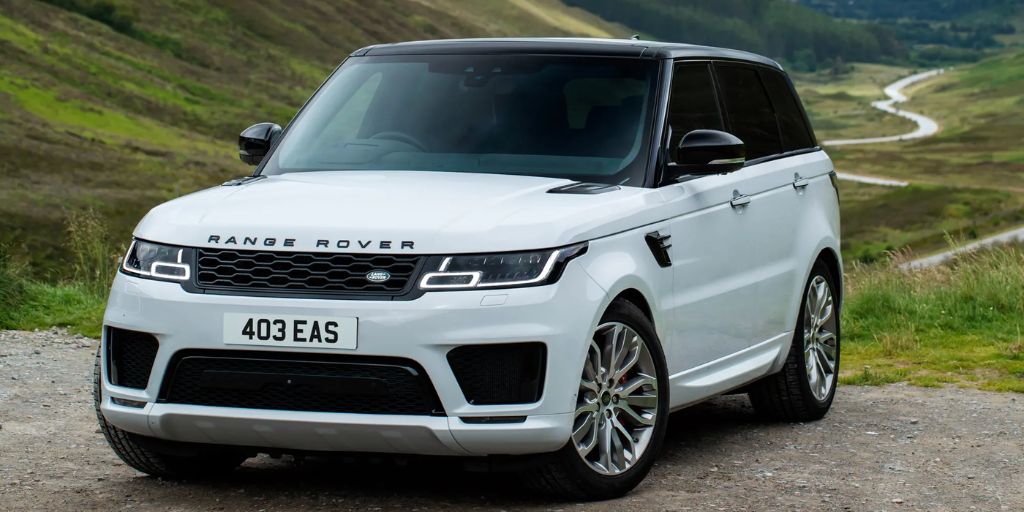
These sophisticated systems require specialized diagnostic equipment and factory-trained technicians to accurately troubleshoot, significantly increasing labor costs before repairs even begin.
The interconnected nature of these systems means that failures often cascade, with one malfunctioning component triggering fault codes in multiple systems and complicating diagnostics.
This complexity extends to routine maintenance, where even simple procedures like brake pad replacement may require electronic system resets using proprietary tools.
Range Rover’s notorious reliability history creates a vicious cycle that further inflates repair costs. The vehicle’s reputation for frequent issues has reduced the number of independent shops willing to work on them, forcing many owners back to dealerships where labor rates can exceed $200 per hour.
This limited competition in the repair market allows dealerships to maintain premium pricing structures that would be unsustainable if more service options existed.
The vehicle’s depreciation curve among the steepest in the automotive industry reflects these maintenance concerns, but ironically makes the Range Rover accessible to second and third owners who may be financially unprepared for the repair costs that await them.
Specific failure points have become almost legendary among Range Rover owners. The air suspension system, while delivering exceptional ride quality and adjustability, represents one of the most common and expensive repair scenarios.
When the compressor or air struts fail a relatively common occurrence as vehicles age replacement costs often exceed $1,000 per corner, with some repairs requiring complete system replacement approaching $5,000.
Electronic parking brakes, power tailgates, and climate control systems similarly demonstrate failure rates that would be unacceptable in mainstream vehicles, each potentially adding thousands to ownership costs over time. Perhaps most troubling is the Range Rover’s tendency to develop serious powertrain issues that can render the vehicle completely inoperable.
The supercharged V8 engines, particularly in 2010-2013 models, developed a reputation for timing chain failures that could lead to catastrophic engine damage, while the diesel variants have experienced fuel system issues that can cost upward of $4,000 to resolve.
Transmission failures, particularly in model years using the ZF 9-speed automatic, have forced some owners into complete replacements costing $8,000 or more.
These fundamental systems failures transform what should be a decade-long ownership experience into an economically unsustainable proposition for many, explaining why so many Range Rovers are sold before reaching the 100,000-mile mark.
2. BMW X5
The BMW X5 epitomizes the challenging economics of luxury German SUV ownership, delivering an exceptional driving experience during the warranty period that gives way to increasingly frequent and expensive repair episodes as the vehicle ages.
This “Sports Activity Vehicle,” as BMW brands it, combines impressive performance with practical utility but does so using engineering solutions that prioritize driving dynamics and feature content over long-term maintenance affordability.
The X5’s repair expense profile begins with its fundamentally complex design philosophy. BMW engineers these vehicles with driving engagement as a primary consideration, resulting in sophisticated systems that require precise calibration and specialized components.
The vehicle’s suspension geometry, advanced all-wheel-drive system, and performance-oriented powertrains all contribute to its exceptional road manners but introduce complexity that directly translates to higher repair costs when components fail.
This engineering approach extends to convenience features, where BMW frequently implements innovative but mechanically complex solutions for functions that could be accomplished through simpler means.
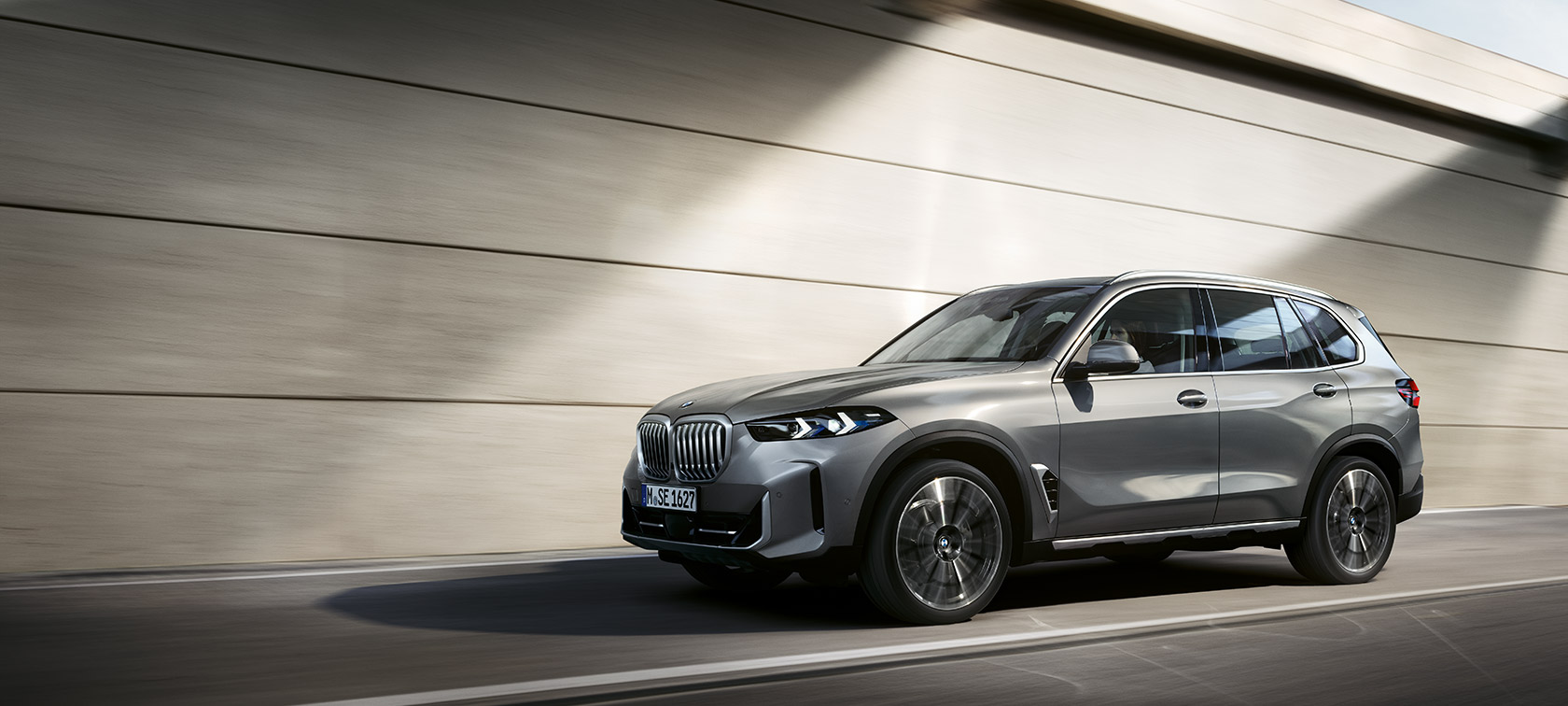
Parts pricing for the X5 reflects BMW’s premium positioning strategy. Components often carry price tags that significantly exceed comparable parts for mainstream vehicles, with markups that cannot be justified by material or production cost differences alone.
This pricing strategy affects everything from routine maintenance items like brake pads and rotors to major components like control arms and electronic modules.
The integrated nature of many systems further compounds costs, as BMW frequently designs components that must be replaced as complete assemblies rather than repairing individual elements.
For example, leaking valve cover gaskets a common issue on many X5 engines often require replacement of the entire valve cover with integrated oil separator system rather than just the gasket itself.
The X5’s electrical architecture represents a particular pain point from a repair perspective. The vehicle employs an extensively networked system of control modules that communicate across multiple proprietary protocols.
When electrical issues develop, diagnosis often requires dealer-level equipment and specialized knowledge that limits repair options and increases costs.
The location of many electronic components in areas vulnerable to heat and moisture further increases failure rates. The notorious integration of critical control modules within the vehicle’s body structure particularly in the E70 (2007-2013) generation means that water damage from sunroof drains or failed door seals can lead to catastrophic electrical failures requiring thousands in repairs.
Specific mechanical systems in the X5 have established problematic reliability patterns that owners can almost anticipate as vehicles age. The pneumatic suspension system, while delivering exceptional ride quality, frequently develops leaks requiring complete strut replacement at costs exceeding $1,000 per corner.
The transfer case in all-wheel-drive models develops actuator and fluid leak issues around 80,000-100,000 miles, often necessitating complete replacement at $3,000-4,000.
Cooling system components, particularly water pumps and thermostats, demonstrate shortened lifespans compared to mainstream vehicles, requiring replacement every 60,000-80,000 miles at costs that typically exceed $1,000 with labor.
Engine-specific issues further complicate the X5 ownership experience, with each powertrain option presenting its own expensive repair scenarios.
The N63 twin-turbocharged V8 engines developed a reputation for excessive oil consumption and premature timing chain wear, while the diesel variants have experienced high-pressure fuel pump failures that can cascade into complete fuel system contamination requiring replacements approaching $10,000.
Even the more reliable six-cylinder models develop valve cover and oil filter housing gasket leaks that, while not catastrophic, require extensive labor to access and repair properly.
These predictable failure points create a steady stream of repair needs that can quickly exceed the vehicle’s declining resale value, explaining why so many X5s are traded in as they approach the 100,000-mile threshold.
3. Mercedes-Benz GLE
The Mercedes-Benz GLE (previously known as the ML-Class) represents the pinnacle of German luxury SUV engineering and unfortunately, also exemplifies the extreme repair costs that often accompany such sophisticated vehicles.
This midsize luxury SUV delivers exceptional comfort, technology, and prestige, but does so through engineering approaches that prioritize performance and feature content over long-term maintenance affordability.
The GLE’s repair expense profile begins with Mercedes’ fundamental engineering philosophy of systems integration. Rather than designing components to function independently, Mercedes creates extensively interconnected systems where multiple modules communicate constantly across proprietary networks.
This approach enables impressive functionality but creates diagnostic challenges when issues arise. When a single component fails, it often generates fault codes across multiple systems, requiring extensive troubleshooting to identify the root cause.
This diagnostic complexity significantly increases labor costs before repairs even begin, with some shops charging multiple hours just to properly identify the underlying issue.
Parts pricing for the GLE reflects Mercedes’ premium brand positioning, with components carrying substantial markups compared to mainstream vehicles. This pricing strategy affects everything from routine items like brake components to major mechanical parts.
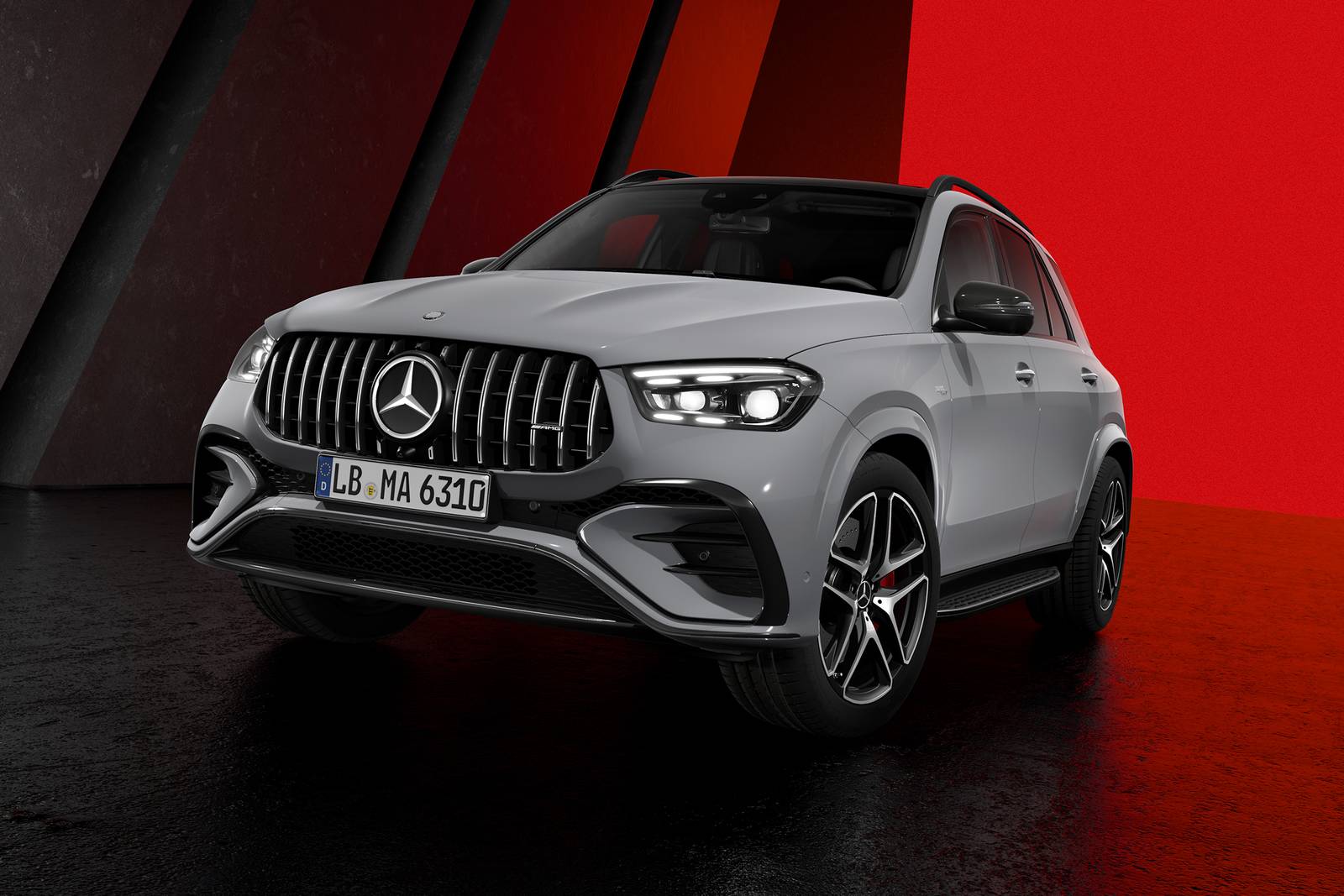
For example, a simple brake service that might cost $300-400 on a mainstream SUV can easily exceed $1,000 on a GLE when using genuine Mercedes parts, particularly on models equipped with the high-performance braking systems.
The company’s parts distribution strategy further compounds costs, with many components available exclusively through dealership channels at premium pricing.
While aftermarket alternatives exist for some items, the integrated nature of many systems means that using non-genuine parts can sometimes create compatibility issues that generate additional problems.
The GLE’s air suspension system represents one of its most problematic and expensive repair scenarios. The AIRMATIC suspension, while delivering exceptional ride quality and adjustability, utilizes complex pneumatic components that frequently develop leaks as vehicles age.
When failures occur, repairs rarely involve simply replacing a single component; instead, the interconnected nature of the system often requires comprehensive replacement of multiple parts.
Complete air suspension rebuilds can easily exceed $4,000-5,000, with some owners opting to convert to conventional coil springs sacrificing the original ride quality but eliminating the recurring repair expenses.
Electronic system failures present another significant cost center for GLE owners. The vehicle incorporates dozens of control modules managing everything from engine functions to convenience features, all communicating across the CAN-bus network.
These modules are often located in vulnerable areas where exposure to heat, vibration, and moisture accelerates failure rates. The infotainment system’s command module, a particular pain point in models from 2012-2018, can develop screen failures or processing issues requiring complete replacement at costs approaching $3,000.
Similarly, the electronic steering column lock module a critical safety component has demonstrated premature failure patterns that can render the vehicle immobile until replaced at costs exceeding $1,000.
Powertrain-specific issues further complicate the GLE ownership experience. The BlueTEC diesel engines, while delivering impressive fuel economy, incorporate complex emissions systems with AdBlue injection that frequently develop issues as mileage accumulates.
The diesel particulate filter and associated components can require replacement around 100,000 miles at costs exceeding $4,000.
The gasoline engines, particularly the twin-turbocharged V8 variants, develop oil leaks from valve cover gaskets and timing cover seals that require extensive disassembly to address properly, with repair bills frequently exceeding $2,000.
These issues typically emerge just as the vehicle’s warranty coverage expires, creating a perfect storm of expenses for second owners who may have purchased the vehicle for its depreciated price without budgeting for its premium maintenance requirements.
4. Audi Q7
The Audi Q7 stands as a masterclass in both German luxury engineering and repair bill generation, offering exceptional driving dynamics and technological sophistication that comes with an equally exceptional cost of ownership over the long term.
This three-row luxury SUV delivers a compelling combination of performance, comfort, and prestige during the warranty period followed by a series of increasingly expensive repair episodes that can quickly exceed the vehicle’s declining resale value.
The Q7’s repair expense profile begins with Audi’s fundamental approach to vehicle packaging. In pursuit of the vehicle’s sleek design and driving dynamics, Audi engineers have created extremely tight engine compartments with components stacked in ways that optimize performance but severely compromise serviceability.
This design philosophy directly translates to increased labor costs, as even relatively simple repairs often require removing multiple unrelated components to gain access to the affected part.
Timing chain services, water pump replacements, and even spark plug changes require substantially more labor time than in vehicles with more service-friendly designs, with some procedures requiring partial removal of the front end assembly a process Audi technicians refer to as “service position.”
Audi’s parts pricing strategy further compounds the Q7’s repair expenses. Components carry substantial markups compared to mainstream vehicles, with prices that often exceed even those of other luxury brands.
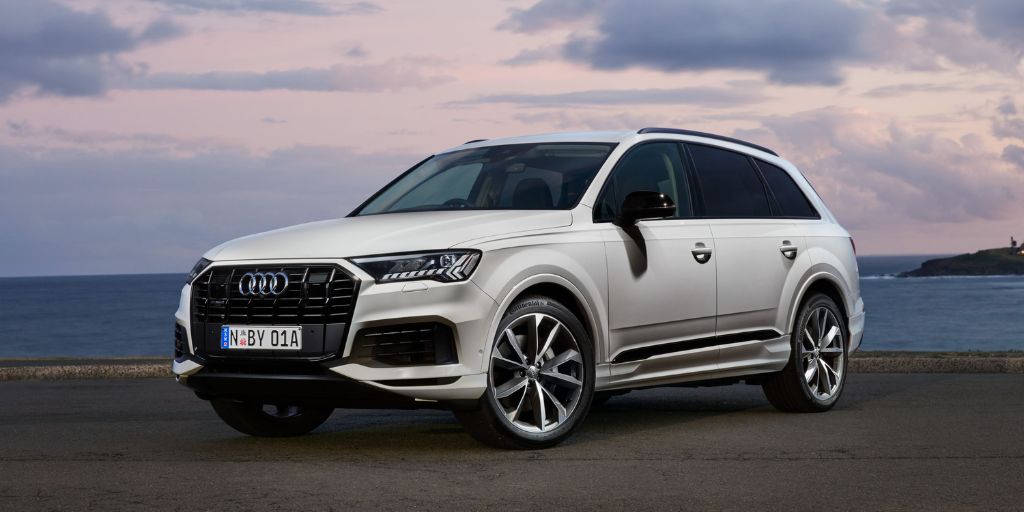
This premium pricing affects everything from routine maintenance items to major mechanical components. For example, the Q7’s brake rotors typically cost two to three times more than comparable parts for mainstream SUVs, while specialized components like control arms with integrated air suspension components can exceed $800 each before labor.
The company’s limited parts distribution network further restricts options, with many components available exclusively through dealership channels that maintain premium pricing structures.
The Q7’s air suspension system represents one of its most notorious repair liabilities. The system, while delivering exceptional ride quality and load-leveling capabilities, employs complex pneumatic components that have demonstrated relatively short service lives compared to conventional springs.
Air compressor failures, leaking struts, and valve block issues commonly emerge between 60,000-100,000 miles, with complete system rebuilds easily exceeding $5,000.
The interconnected nature of the system means that failures rarely remain isolated; when one component begins to fail, the increased strain on remaining parts often accelerates their deterioration, creating a cascade of related repairs.
Electronic complexity presents another significant cost center for Q7 owners. The vehicle incorporates dozens of control modules managing everything from engine functions to convenience features, all communicating across Audi’s proprietary network.
These modules frequently develop issues as vehicles age, with the MMI (Multi-Media Interface) system being particularly problematic. Screen failures, processing issues, and communication errors in the MMI can require complete module replacement at costs approaching $3,000.
Even more concerning are the electronic issues that can render the vehicle immobile, such as ignition switch module failures that prevent the vehicle from recognizing the key, requiring specialized recoding and component replacement at dealership-only rates.
Powertrain-specific issues further complicate the Q7 ownership experience. The 3.0L supercharged V6 engines develop timing chain tensioner issues that can lead to catastrophic engine damage if not addressed preemptively, while the 3.0L TDI diesel engines have experienced high-pressure fuel pump failures that can contaminate the entire fuel system, requiring comprehensive replacement of multiple components at costs exceeding $8,000.
The early 4.2L V8 engines developed carbon buildup issues and timing chain problems that often necessitated complete engine rebuilds or replacements approaching $15,000.
These fundamental powertrain concerns emerge just as many Q7s transition to second or third owners, creating repair bills that can exceed the vehicle’s market value in a single service visit.
5. Cadillac Escalade
The Cadillac Escalade represents America’s distinctive approach to luxury SUVs, delivering imposing presence and abundant features through engineering approaches that often prioritize initial impression over long-term durability.
This flagship luxury SUV provides an unmistakable statement of arrival during the warranty period, followed by a series of increasingly expensive repair episodes that can quickly transform ownership from a status symbol to a financial burden.
The Escalade’s repair expense profile begins with its fundamental architecture as a body-on-frame SUV sharing core components with GM’s full-size truck lineup.
While this platform provides excellent towing capacity and a commanding presence, it also incorporates complex systems that have demonstrated relatively short service lives compared to simpler designs.
The vehicle’s sophisticated active suspension components, particularly the Magnetic Ride Control system, deliver exceptional ride quality but employ specialized shock absorbers that typically require replacement around 60,000-80,000 miles at costs approaching $1,000 per corner.
Unlike conventional shocks that can be replaced individually as they wear, these computer-controlled units often require replacement as a complete set to maintain proper calibration.
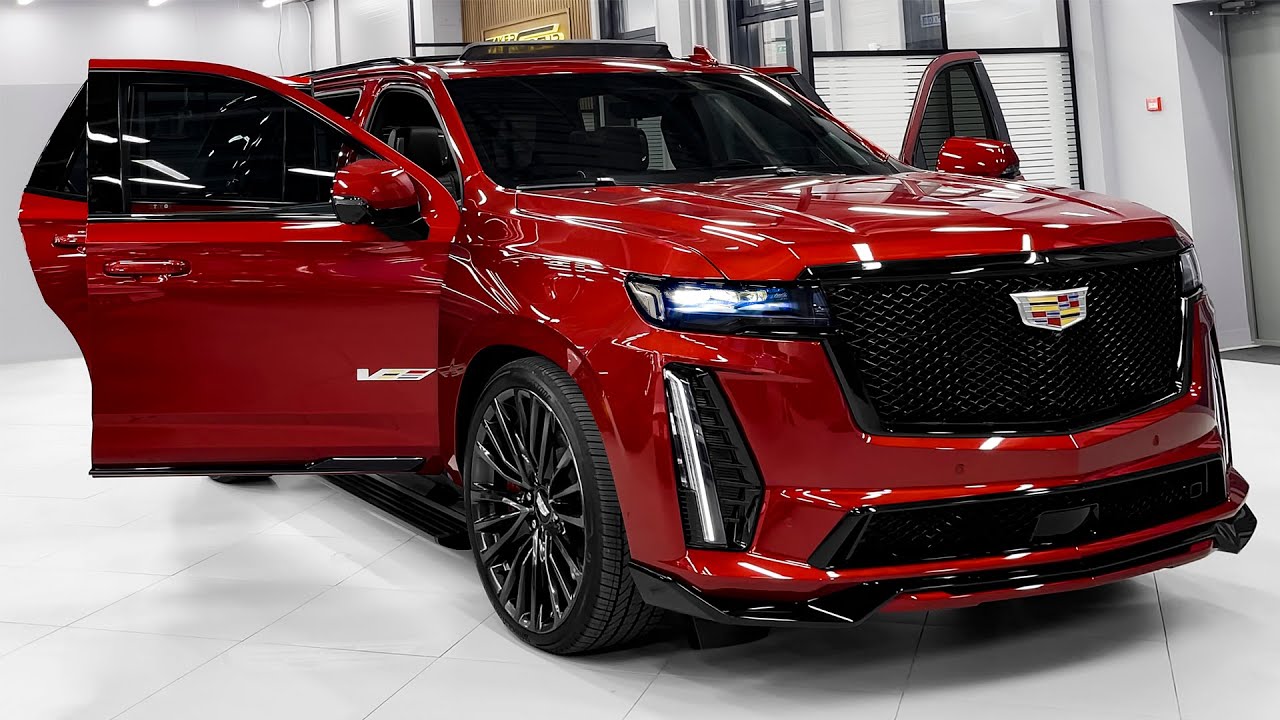
The Escalade’s advanced convenience features represent another significant repair liability. The power-deployable running boards, while impressive during dealer demonstrations, incorporate complex mechanical and electronic components exposed to road debris, moisture, and temperature extremes.
These systems frequently develop failures around 50,000-70,000 miles, with repair costs typically exceeding $1,500 per side. Similar concerns affect the power liftgate, which employs motors and control modules that demonstrate higher failure rates than manual alternatives.
These convenience features, while contributing to the vehicle’s luxury image, create recurring repair scenarios that mainstream SUVs simply don’t experience.
Powertrain issues present particular concerns for Escalade owners, with specific engine generations developing well-documented problems. The 6.2L V8 engines employed Active Fuel Management (cylinder deactivation) systems that frequently developed lifter failures around 80,000-100,000 miles, often requiring complete upper engine rebuilds exceeding $4,000.
The sophisticated eight-speed automatic transmissions introduced in 2015 have experienced valve body and torque converter issues requiring either substantial repairs or complete replacements at costs approaching $5,000.
Even the all-wheel-drive transfer case demonstrates vulnerability to fluid leaks and actuator failures, with replacement costs typically exceeding $2,000 including labor.
The Escalade’s electrical architecture creates additional repair concerns. The vehicle employs dozens of control modules managing functions from infotainment to climate control, all communicating across proprietary networks.
These electronics frequently develop issues as vehicles age, with the CUE (Cadillac User Experience) infotainment system being particularly problematic.
Screen failures, processing issues, and touch sensitivity concerns in the CUE system can require complete module replacement at costs approaching $2,500.
Even more concerning are the electrical issues affecting the vehicle’s basic functionality, such as instrument cluster failures that render gauges inoperative or body control module malfunctions that can disable critical vehicle functions.
Interior component durability represents a final area of concern for Escalade owners. Despite the vehicle’s premium pricing, many interior materials demonstrate wear patterns disproportionate to their cost, particularly in high-traffic areas.
The driver’s seat typically shows significant leather wear or cracking around 70,000-80,000 miles, with replacement upholstery exceeding $2,000 when properly matched to the original materials.
Dashboard surfaces develop cracking in response to UV exposure and heat cycling, while door panels and center consoles experience premature wear at touch points.
These deterioration patterns accelerate in vehicles operated in extreme climates, with leather and vinyl components being particularly vulnerable to the combination of temperature fluctuations and interior humidity changes.
Also Read: 5 Cars With Seamless Bluetooth and 5 That Always Disconnect

